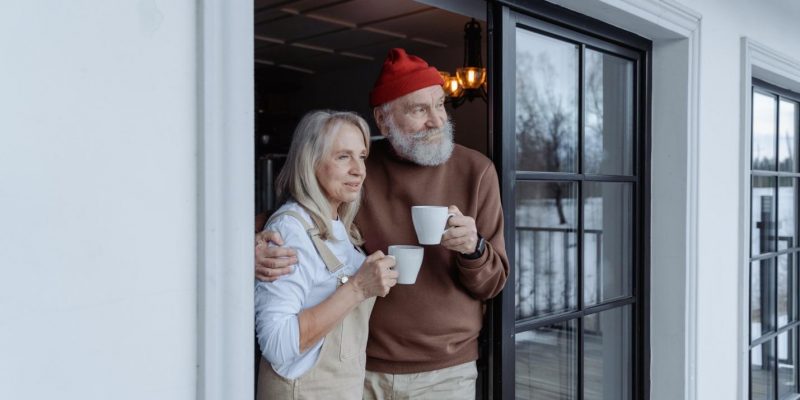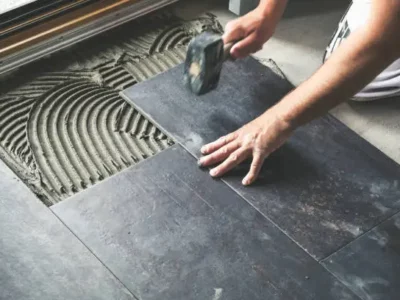Aging gracefully often comes with the need for a few lifestyle adjustments. Making your home senior-friendly is one such essential transformation. By incorporating some thoughtful design and structural changes, you can ensure that seniors live comfortably, safely, and independently.
In Austin, a city renowned for its diverse demographics, seniors are choosing to age in place. Many senior homeowners express a desire to live in their homes. However, only a few homes are currently equipped to cater to senior-specific needs. The gap between desire and reality showcases the pressing need for home upgrades that prioritize safety, convenience, and independence for senior adults.
Today, we will explore how you can adapt living spaces to be more senior-friendly, ensuring that Austin’s seniors can enjoy their golden years in the comfort and familiarity of their own homes.
1. Bathroom Upgrades
A bathroom can often be a challenging space for seniors. However, with thoughtful modifications, it can be made safer and more accessible. Also, many Austin’s senior residents have expressed concerns about bathroom safety, which makes it imperative to upgrade certain bathroom features.
Thoughtful modifications, such as a non-slip bath mat, can greatly reduce the risk of slips and falls. Moreover, for those with limited hand strength or mobility, switching to lever-style faucets are better options compared to the traditional knobs.
Grab Bars: Think of these as an extra hand to hold. Strategically placed, they can help seniors maintain balance on slippery floors.
Walk-in Showers: They eliminate the need to step over a tub ledge, and secondly, they can accommodate benches or chairs, allowing for seated showers.
Raised Toilet Seats: These seats not only add height, they also come equipped with armrests, easing the process of sitting down and standing up. If you’re considering such changes, consulting with one of the Austin bathroom remodeling experts can provide quality workmanship.
2. Floor Plans & Mobility
As seniors age, mobility can become a concern. Here are some upgrades you can consider:
Wide Doorways and Hallways: Having spacious pathways not only add to the aesthetics; they also provide accessibility. More expansive spaces can easily accommodate mobility aids like wheelchairs and reduce the chances of accidental bumps or stumbles.
Open Floor Plan: Removing unnecessary partitions or walls can make a home feel larger, brighter, and easier to navigate. It allows for more natural light, reducing the strain on aging eyes.
Non-Slip Flooring: Consider materials like cork or vinyl, which offer traction and are softer underfoot. This can be especially important in areas prone to moisture, like bathrooms or kitchens.
A home designed with mobility in mind isn’t just practical; it offers seniors the independence and confidence to move freely, making daily life both safer.
3. Kitchen Upgrades
For seniors, a kitchen should not only be aesthetically pleasing; it should also be safe and functional.
Pull-Out Shelves: These shelves are a back-saver. By coming out toward the user, they reduce the need to bend, stretch, or hunt for items.
Lever-Handled Faucets: The ergonomics of lever handles make them ideal for hands that might struggle with grip. Plus, they give a modern look to the kitchen.
Lowered Countertops: A counter height that’s wheelchair accessible can make food prep, cooking, or even cleaning much more manageable. It’s all about creating an inclusive space. Additionally, rounded counter edges minimize injury risks, making the kitchen a more senior-friendly space.
4. Lighting & Visibility
Ample Lighting: Consider investing in brighter LED bulbs. Not only are they energy efficient, but they also provide clear, bright light, essential for reading or detailed tasks. As individuals grow older, the clarity of vision can weaken, making it difficult to navigate spaces with inadequate lighting. To ensure safety and ease for seniors, consider opting for bulbs with higher luminosity. This simple switch can illuminate spaces more effectively without necessarily adding extra fixtures. Additionally, it’s a good idea to introduce focused task lighting in areas of frequent use, such as the bathroom, over the kitchen sink, or by the bedside.
Contrasting Colors: As eyesight weakens with age, distinguishing between similar colors can become challenging. Incorporating contrasting colors in homes, especially in areas like stair edges and countertops, can help seniors identify boundaries and objects more clearly, reducing potential mishaps and enhancing overall safety and ease of navigation. Bold, contrasting colors can act as visual cues. For instance, a brightly colored railing can serve as both a guide and a support.
Night Lights: Motion-activated night lights are a great choice. They light up when someone is passing by, ensuring clear visibility without fumbling for switches.
5. Accessibility Additions
Stairs: Upgrading the staircase is a crucial step in making homes senior-friendly. Given the potential risks of narrow, steep, or slippery stairs and uneven transitions, even a small misstep can lead to injury. Ensure all staircases, both inside and outside the home, are equipped with durable handrails spanning their entire length. For those using a walker or wheelchair, a stair lift can be an invaluable addition to ensure safe and effortless movement between floors.
Modern stairlifts are sleek, efficient, and a boon for multi-story homes. They ensure seniors have access to their entire home without the risk of stair-related accidents.
Ramps: These aren’t just for wheelchairs. A well-designed ramp provides gentle elevation, aiding those with walkers, canes, or even arthritis.
Lowered Peepholes: This minor tweak in peephole positioning ensures that everyone, regardless of height or mobility, can see who’s at the door.
6. General Safety
Medical Alert System: Today’s systems are advanced, offering fall detection and even medication reminders, ensuring seniors have help at the touch of a button.
Eliminate Tripping Hazards: Take a walk through the home and look for potential trip points. This could be an uneven floorboard, a protruding corner, or even a worn out carpet.
Easy-to-Use Handles: Modern lever handles are not just more comfortable; they’re also often more secure, offering better-locking mechanisms than traditional knobs.
7. Smart Home Features
Smart technologies are helping with elderly care at home. From advanced home surveillance systems and digital door locks to video-enabled doorbells and automated climate control, these innovations are increasing safety and convenience. For an even smoother experience, consider bringing in voice-activated assistants. They can manage everything from lights and TVs to thermostats, all through simple voice commands.
Conclusion
Today creating senior-friendly homes is more crucial than ever. These modifications not only ensure the safety and comfort of our loved ones but also allow them to maintain their independence and dignity. From the bathroom to the kitchen, from lighting to floor plans, small changes can have a great impact. As we prioritize these modifications, we build a home that ages gracefully alongside its residents, offering peace of mind to families. These upgrades also help ensure our elders enjoy their golden years in comfort and style. So, let’s invest today in homes that cater to tomorrow’s needs.




















